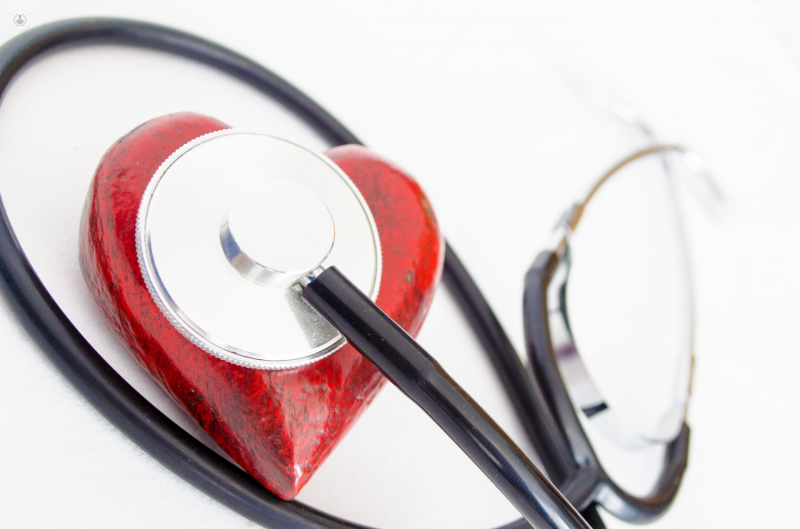Pulmonary hypertension
Dr Francesco Lo Giudice - Cardiology
Created on: 11-13-2012
Updated on: 10-26-2023
Edited by: Conor Lynch
What is pulmonary hypertension?
Pulmonary hypertension is high blood pressure that affects the lung arteries and the right side of the heart. It is a serious condition in which the blood vessels that transport blood from the heart to the lungs – the pulmonary arteries – narrow, harden, are blocked, or damaged.

If at higher pressure, the right ventricle has to work harder to pump blood. This weakens the heart muscle which can cause it to fail.
Pulmonary hypertension can be classified in different stages:
- Stage I: despite diagnosis, the patient notices no symptoms with normal activity.
- Stage II: the patient has no symptoms when resting, but does notice a change when performing activities.
- Stage III: the patient is fine when resting but has symptoms when physically active.
- Stage IV: the patient has symptoms when physically active and when resting.
Pulmonary hypertension can cause some complications, such as:
- Enlargement of the right side of the heart, causing heart failure
- Blood clots
- Arrhythmias
- Bleeding.
What is the outlook for patients diagnosed with pulmonary hypertension?
Prognosis varies depending on the stage of the condition. In some cases of stage III and stage IV, the disease can be fatal.
It is an incurable disease, but there are many treatments available to alleviate symptoms and improve quality of life. In recent years, big improvements have been made in how the condition is treated. New treatments have proven to be more effective, improve the quality of life, and increase life expectancy for patients.
What are the symptoms?
In most cases, symptoms are only noticeable when the condition is at an advances stage. It may take months or years for the symptoms to be noticeable, which is why primary care is so important for getting an early diagnosis. As the condition progresses, symptoms get worse.
The most common symptoms with pulmonary hypertension are:
- Dyspnea: shortness of breath when exercising or resting
- Fatigue
- Chest pressure
- Chest pain
- Dizziness
- Fainting (syncope)
- Swelling of the feet and legs, and eventually the abdomen
- Cyanosis: bluish discolouration of the lips and skin
- Increased heart rate
- Loss of appetite.
How is pulmonary hypertension diagnosed?
Diagnosing pulmonary hypertension is not always easy as symptoms don’t tend to appear until the disease is advanced. There are many medical tests to diagnose the condition:
- Echocardiogram
- Chest X-ray
- Electrocardiogram
- Right heart catheterisation
- Blood test.
In order to see the condition of the patient’s lungs, there are tests to check other organs and to determine the cause of the disease.
- CT scan
- MRI scan
- Pulmonary function tests
- Polysomnography
- Ventilation/perfusion scan
- Open lung biopsy.
If a family member has had pulmonary hypertension, the specialist may analyse the genetic factors associated with it. If the result is positive, the specialist may recommend other family member to be tested.
Echocardiography is the most important test used to identify this condition in breathless patients. Many other tests (lung function, lung scans, right heart catheterisation etc.) are required to find the exact cause and give the right treatment once pulmonary hypertension is suspected.
Due to the specialised nature of the testing and treatment required, all UK patients with pulmonary hypertension that is not clearly due to left heart and lung disease are referred to one of seven national specialist centres.
What causes it?
The heart has four cavities: two upper chambers known as atria, and two lower chambers known as ventricles. When blood passes through the heart, the right ventricle pumps blood to the lung through the pulmonary artery.
The lungs take in oxygen and get rid of carbon dioxide, returning the oxygenated blood pulmonary veins to the heart.
In cases of pulmonary hypertension, there are changes in the cells that cover the pulmonary arteries. The walls harden or additional tissues form which can cause an obstruction.
These changes can block or reduce blood flow, raising blood pressure in the pulmonary arteries.
According to the cause, pulmonary hypertension is classified in five groups:
- Group 1: Pulmonary arterial hypertension
- Unknown cause, known as idiopathic hypertension
- Specific gene mutation, hereditary pulmonary arterial hypertension
- Medications or drugs such as methamphetamines
- Congenital heart disease
- Connective tissue disorder, HIV, and chronic liver disease, cirrhosis.
- Group 2: Pulmonary hypertension caused by left-side heart disease
- Left valve heart disease or mitral or aortic valve disease
- Lower left chamber heart failure
- Group 3: Hypertension caused by lung disease
- Chronic obstructive pulmonary disease (COPD), emphysema
- Lung disease, pulmonary fibrosis
- Sleep apnea
- Group 4: Pulmonary hypertension caused by chronic blood clots
- Embolism
- Group 5: Hypertension associated with other conditions
- Blood disorders
- Sarcoidosis
- Metabolic disorders
- Tumours that put pressure on the pulmonary arteries
- Eisenmenger’s syndrome and pulmonary hypertension
- Congenital heart disease that causes pulmonary hypertension. In this disease, there is a large hole between the ventricles that cause the blood to circulate abnormally.
How can it be prevented?
Pulmonary hypertension is often only noticeable when the condition is at an advanced stage. There isn’t a known way to prevent it from developing, although certain risk factors should be avoided:
- Avoid being overweight
- In the event of family history of pulmonary hypertension, you should see a specialist
- Conditions that increase the risk of developing hypertension
- Consuming illegal drugs such as cocaine
- Appetite suppressant medication.
What is the treatment?
Pulmonary hypertension is an incurable disease. Specialists can help treat and manage the condition, treating symptoms, and slowing disease progression.
- Pulmonary hypertension medicines:
- Blood vessel dilators
- Anticoagulants
- Diuretics
- Digoxin
- Oxygen therapy
- Endothelin receptor antagonists
- Sildenafil and tadalafil
- High doses of calcium channel blockers
- Soluble guanylate cyclase stimulator.
- Surgeries:
- Atrial septostomy: a small hole is made in the upper chambers of the heart to alleviate pressure. It can lead to serious complications, such as arrhythmias. It is generally used when treatment with medication has not worked.
- Transplant: in some cases, a heart or lung transplant is an option, especially for young people with idiopathic pulmonary arterial hypertension.
What specialist should I see?
Cardiologists are the specialists who treat pulmonary hypertension regardless of age. Cardiovascular surgeons also treat this condition.
A pneumologist may also be involved in treating this condition, although they are normally only involved up until diagnosis.












